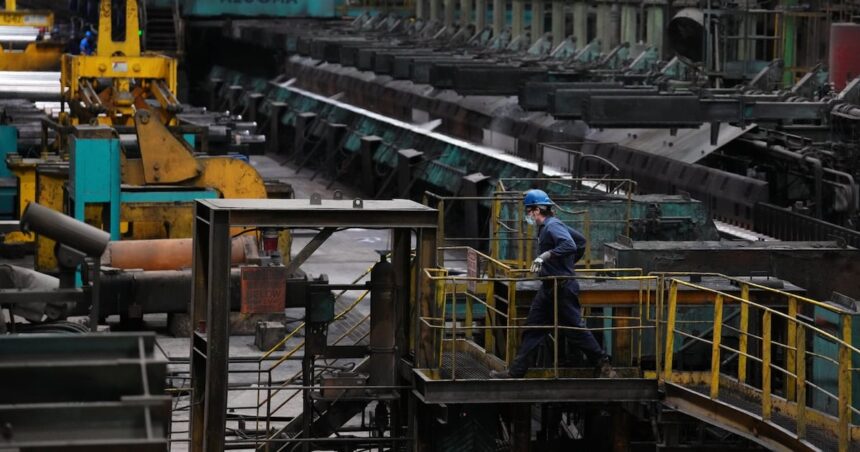At the core of every industrial giant’s workplace fatality lies a tangle of accountability questions. When a contractor died at Algoma Steel’s Sault Ste. Marie facility in 2019, few expected the steel producer would later sue a contractor for $2 million over the incident.
The lawsuit, filed in Ontario Superior Court, reveals a complex web of contractual obligations, safety protocols, and liability disputes that followed the death of a 56-year-old maintenance worker. I’ve spent the past week reviewing court documents that paint a troubling picture of how workplace safety responsibilities can become contested terrain after tragedy strikes.
“Industrial accidents often expose the gaps between corporate safety policies and implementation realities,” explains Sarah Morin, workplace safety attorney with the Industrial Workers Legal Defence Coalition. “These cases frequently reveal how responsibility gets distributed—or disputed—between companies and their contractors.”
According to court filings, the worker was performing maintenance on conveyor systems when the fatal accident occurred. Algoma Steel claims the contracting company failed to properly train and supervise staff working in the hazardous environment. The contractor, meanwhile, maintains they followed all safety protocols outlined in their agreement with the steel producer.
The lawsuit comes nearly three years after the Ontario Ministry of Labour completed its investigation, which resulted in several occupational health and safety violations against both Algoma Steel and the contracting firm. Each company paid regulatory fines exceeding $100,000.
What makes this case particularly significant is how it highlights the increasingly complex liability landscape in industrial settings. The steel producer’s claim seeks to recover costs related to production disruptions, regulatory penalties, and legal expenses associated with the fatality.
I spoke with Diane Lebouthillier, former safety compliance officer with the Canadian Centre for Occupational Health and Safety, who reviewed the case details at my request. “This litigation strategy is becoming more common,” she noted. “Companies are increasingly using indemnification clauses to shield themselves from financial consequences of workplace incidents, even when regulatory bodies find shared responsibility.”
The court documents reveal Algoma Steel is citing a specific indemnification clause in their contractor agreement—standard language that exists in thousands of similar contracts across Canada’s industrial sector. The clause requires contractors to “hold harmless” the company from any claims arising from the contractor’s work, regardless of contributing factors.
The worker’s family settled a separate wrongful death claim last year for an undisclosed amount. Their lawyer, who requested anonymity due to ongoing litigation, told me the family was “devastated to see companies fighting over financial liability while still grieving their loved one.”
Ministry of Labour reports, obtained through a Freedom of Information request, identified several potential contributing factors to the incident. These included insufficient lockout procedures, inadequate training documentation, and communication breakdowns between Algoma Steel’s operations team and the contracting company’s workers.
The case has captured attention across Ontario’s industrial sector. An analysis published in the Canadian Journal of Occupational Health and Safety suggests the outcome could influence how companies structure contractor relationships and safety protocols moving forward.
“If Algoma succeeds in pushing all financial liability to the contractor despite regulatory findings of shared responsibility, we’ll likely see more companies taking this approach,” says Pierre Trudeau, industrial relations professor at Laurentian University. “This raises serious questions about whether such legal strategies ultimately enhance or undermine workplace safety in complex industrial environments.”
The contractor has filed a counter-claim asserting that Algoma Steel maintained control over critical safety systems and site access protocols that contributed to the incident. Their defense relies partly on documentation showing that the steel producer’s own safety personnel were responsible for site orientation and approving work plans.
I visited the Sault Ste. Marie facility last week, where current employees expressed mixed reactions to the lawsuit. One longtime worker, speaking on condition of anonymity due to fear of reprisal, described a “culture where safety gets emphasized in meetings but production pressures often win out when deadlines approach.”
Court hearings are scheduled to begin next month. Legal experts suggest the case could establish important precedent regarding the enforceability of broad indemnification clauses in situations where multiple parties share responsibility for workplace safety conditions.
For the families of those lost to industrial accidents, these legal battles often reopen wounds. As Algoma Steel and its contractor prepare their arguments, the case serves as a sobering reminder that workplace fatalities leave behind not just grieving families, but also complex questions about corporate responsibility that can take years to resolve.






